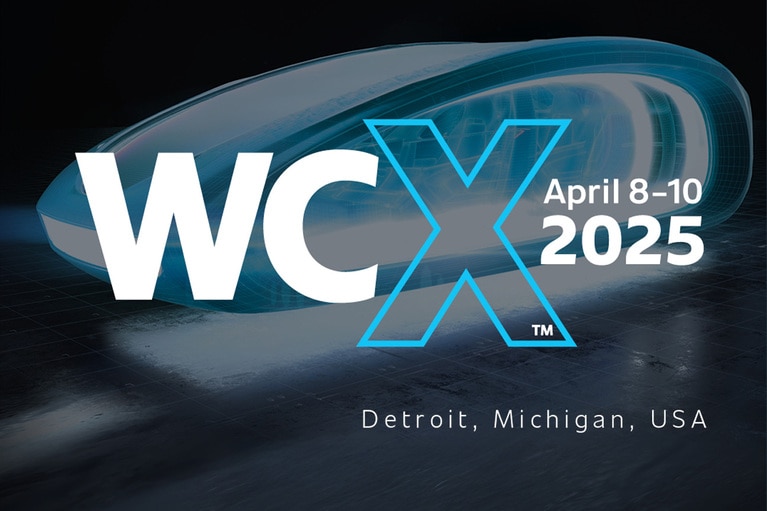By Haris Muhedinovic, Senior Field Application Engineer
Charge anxiety is on the rise as today’s EVs are increasing the primary battery voltage from 400 to 800V, even though public infrastructure is not adequate to support 800VDC fast charging. Upgrading the charging station infrastructure is not a tenable short-term solution. A faster, more holistic approach is an onboard conversion solution which enables 400 or 800V compatibility. This approach can be adopted without significant capital investment and is a far easier execution.
DC fast-charging incompatibility
The incompatibility problem is focused on DC charging, which is commonly used for long-range driving where time and access are limited. AC charging for everyday charging is not an issue because the existing grid infrastructure AC charging is fairly convenient. This type of charging is readily accessible to people who own EVs and can charge at home (overnight) or work (daytime) where charging speed is not critical. AC charging is ideal for daily use and short-range driving, and it is the cheapest and most practical solution for daily trips up to 300km.
When people are traveling long distances, however, they need to charge quickly and in public places, such as at a highway rest stop. In those cases, they can use DC fast charging stations. These stations require more than 50kW of power, reaching 150kW or 350kW at peak. While DC charging may be used less frequently than AC charging, it is very important to have a solid network of this type to reduce range anxiety. In 2020, the DC charging network totaled around 400,000 publicly-accessible fast chargers, with few of these supporting 800V vehicles. For example, in Europe, only 400 of 40,000 total charging stations support 800V vehicles.
This imbalance between 400V and 800V charging stations presents a significant problem as OEMs begin rolling out new 800V vehicles: the public infrastructure to charge them is inadequate.
Exploring the DC fast-charging solutions
Broadly speaking, there are two approaches to solving DC fast-charging problem: one focuses on making changes to the charging stations, the other on making changes to the vehicle.
Expanding the DC fast-charging network of charging stations can alleviate this problem, but it may not be the most expeditious nor cost-effective. There are two ways to expand the DC fast-charging network:
- Adding 800V stations: installing new DC fast-charging stations with wide-voltage capability (from 250 to 920V) is one solution, but it requires considerable investment in time and money. Today there are approximately 1,000 charging stations in Europe and USA that offer 800V charging, which accounts for only about 2% of all available DC charging stations. To address the growth of 800V EVs, that network would need to expand to hundreds more stations. Installing that many new stations will take years and be cost-prohibitive.
- Utilizing 400V stations: another approach is to leverage the 400V stations and upgrade them to also support 800V, but this presents its own set of challenges. Charging at ultra-high-power rates (>150kW) is not always available and not always possible (temperature, battery degradation, etc.). Also, charging times would be slower than desired for 800V.
Onboard charging with a modular DC-DC virtual battery offers flexibility and 99% efficiency. In contrast to expanding the charging network, onboard conversion solutions are a more holistic approach to enable 400 or 800V compatibility. This approach can be adopted much more quickly and with no capital investment in charging infrastructure.
The incompatibility between 800V batteries and 400V chargers can be solved through “battery virtualization.” With battery virtualization, the charger “sees” a 400V battery on one side of the onboard charger even while the 800V battery is connected to the other side. This approach starts from the battery voltage and adapts it to the voltage range acceptable by charging station (Figure 1).
Figure 1: The incompatibility between 800V batteries and 400V chargers can be solved through “battery virtualization.” With battery virtualization, the charger “sees” a 400V battery on one side of the onboard charger even while the 800V battery is connected to the other side.
This approach starts from the battery voltage and adapts it to the voltage range acceptable by charging station.
Vicor high-density, high-power modules can be used to implement a DC-DC converter onboard charging solution for battery virtualization without adding size, weight and design complexity.
Vicor NBM™ bidirectional modules convert tens of kW of power reaching 550kW/liter and 130kW/kg in power density, using power converters at least 50% smaller and lighter than discrete solutions. The Vicor proprietary SAC™ (Sine Amplitude Converter) topology ensures soft switching on primary and secondary sides, reaching 99% efficiency. This behavior implies simple EMC design and offers flexible cooling management (Figure 2).
Figure 2: Vicor NBM bidirectional modules convert tens of kW of power reaching 550kW/litre and 130kW/kg in power density, using power converters at least 50% smaller and lighter than discrete solutions.
Connecting a battery to one side of an NBM module will immediately virtualize a battery on the other side, dividing or multiplying the voltage or current by constant factor. Ultimately, NBM modules extend the voltage range of charging stations (250 to 460V to 500 to 920V), thus increasing the number of overall available charging points and making an EV compatible with any DC charging station.
Flawless powertrain design and a high-bandwidth controller enable this battery virtualization. Vicor packaging technology not only simplifies assembly and manufacturing but also offers flexibility and scalability of power. OEMs can configure scalable packages of charging power from 50 to 150kW using the same module without need for additional qualification and certifications.
Another reason to use power modules
Not only does the NBM have the capacity to offer battery virtualization for charging, it can also integrate with the traction battery to deliver higher efficiency for low-RPM driving. For example, city driving requires lower RPMs and the 800V traction inverter efficiency falls drastically by more than 15%. The NBM can be used in this ancillary manner to supply the inverter with half of the battery voltage, cutting switching losses in half and extending driving range. This is another advantage of how an integrated, modular approach to power can optimize the power delivery network, enabling partial utilization of the DC-DC converter to maintain peak efficiency.
Eliminate range anxiety before starting up by using onboard boost conversion
While charging station infrastructure will certainly expand to support the growth of EVs, expansion alone will not resolve the 400V/800V compatibility problem. The most impactful solution to reduce range anxiety is to design onboard chargers that are compatible with any DC fast charger.
The Vicor onboard solution using high performance power modules enables full compatibility between 800V/400V vehicles and DC charging networks with minimal investment and maximum benefit. On average, the Vicor solution is half the size and weight of most discrete solutions and delivers very high efficiency and scalability. It can convert tens of kW of power reaching 550kW/liter and 130kW/kg in power density. The combination of high power density, flexibility and high efficiency make Vicor power modules an ideal onboard solution to solve 400V/800V EV charging compatibility problem.
Haris Muhedinovic works with OEMs and TIERs to design and develop highest performance power solutions for most demanding automotive applications. With his interest in power electronics and electronics systems, Haris is aware of new technologies and trends in industry, which allows him to implement power solutions to meet the most demanding specifications. Haris received his MSc from the University of Sarajevo and has 7 years of experience in power electronics in design and application engineering.
Haris Muhedinovic, Senior Field Application Engineer












